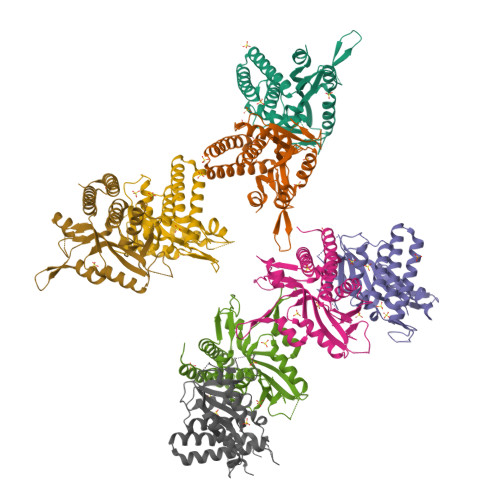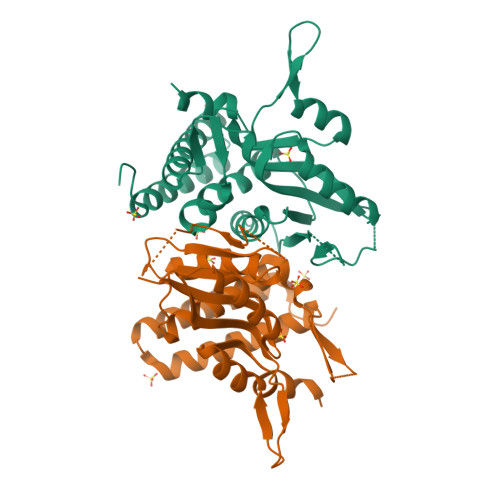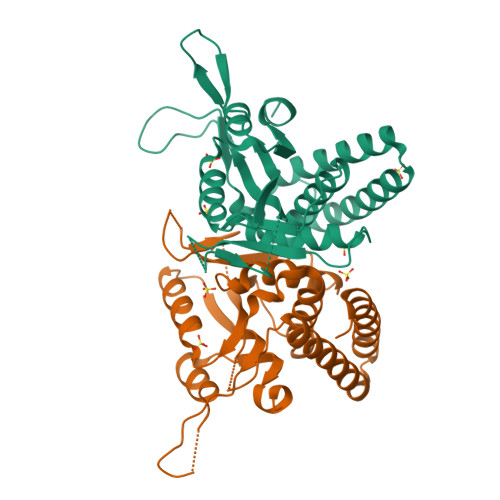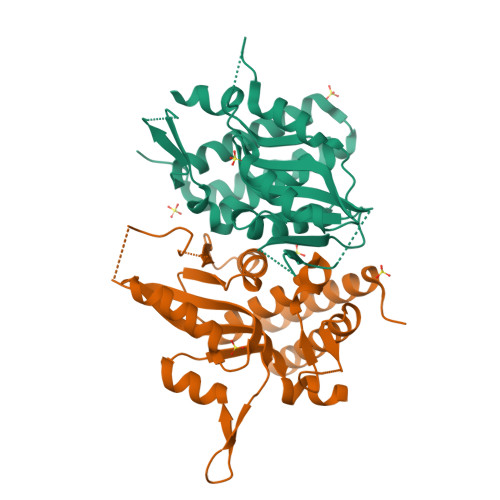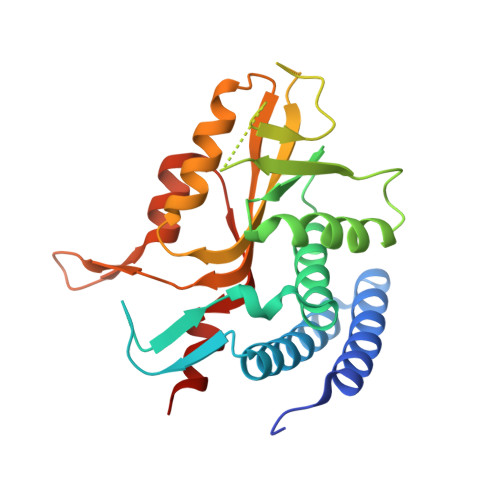Structure of Plasmodium falciparum orotate phosphoribosyltransferase with autologous inhibitory protein-protein interactions.
Kumar, S., Krishnamoorthy, K., Mudeppa, D.G., Rathod, P.K.(2015) Acta Crystallogr F Struct Biol Commun 71: 600-608
- PubMed: 25945715
- DOI: https://doi.org/10.1107/S2053230X1500549X
- Primary Citation of Related Structures:
4FYM - PubMed Abstract:
The most severe form of malaria is caused by the obligate parasite Plasmodium falciparum. Orotate phosphoribosyltransferase (OPRTase) is the fifth enzyme in the de novo pyrimidine-synthesis pathway in the parasite, which lacks salvage pathways. Among all of the malaria de novo pyrimidine-biosynthesis enzymes, the structure of P. falciparum OPRTase (PfOPRTase) was the only one unavailable until now. PfOPRTase that could be crystallized was obtained after some low-complexity sequences were removed. Four catalytic dimers were seen in the asymmetic unit (a total of eight polypeptides). In addition to revealing unique amino acids in the PfOPRTase active sites, asymmetric dimers in the larger structure pointed to novel parasite-specific protein-protein interactions that occlude the catalytic active sites. The latter could potentially modulate PfOPRTase activity in parasites and possibly provide new insights for blocking PfOPRTase functions.
Organizational Affiliation:
Department of Chemistry, University of Washington, Seattle, WA 98195, USA.








